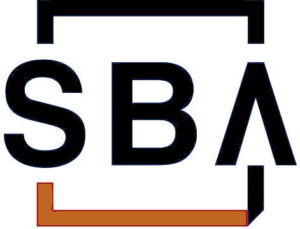The SBA 7(a) loan program serves as the U.S. Small Business Administration’s flagship lending initiative, designed to bridge the gap between small businesses’ need and what traditional lenders are willing to provide. By guaranteeing a portion of the loan (typically 75 to 85%), the SBA reduces the risk for lenders, making them more willing to extend credit to small businesses that might not otherwise qualify for conventional financing.
These loans address the fundamental challenge many small businesses face, accessing affordable capital with reasonable terms. Traditional banks often view small businesses as high-risk borrowers, leading to either loan denials or less favorable terms. The SBA guarantee enables lenders to offer more competitive interest rates, longer repayment terms and lower down payment requirements than would typically be available through conventional commercial loans.
The loans are specifically designed to support small businesses across a wide range of financing needs, including real estate acquisition, working capital, debt refinancing and equipment purchases.
To secure an SBA 7(a) loan, a borrower must work through a participating lender and not directly with the Small Business Administration.
Eligibility Requirements
Meeting the qualification criteria for an SBA 7(a) loan requires careful attention to several key requirements. Borrower’s business must operate as a for-profit entity with its primary operations based in the United States or its territories. The SBA defines “small business” according to industry-specific size standards. Typically this means having fewer than 500 employees and generating less than $7.5 million in average annual revenue over the preceding three years.

Beyond size requirements, the borrower must demonstrate a clear ability to repay the loan and articulate a sound business purpose for the requested funds. The SBA generally expects applicants to have explored and exhausted other non-government financing options on reasonable terms before pursuing an SBA loan. Business owners holding 20% or more equity in the company will typically need to provide personal guarantees, thus accepting personal liability for the debt.
Financial creditworthiness plays a crucial role in the approval process. Lenders generally prefer credit scores above 680, and applicants should have a clean financial history without recent bankruptcies, foreclosures or outstanding tax liens that could indicate financial instability.
Application Process
Define Your Financing Needs
The applicant should begin by clearly articulating the specific purpose and amount of funding it requires. This involves comprehensive financial planning and developing a detailed understanding of how the loan proceeds will be utilized to benefit its business operations.
Compile Required Documentation
Thorough preparation of application materials will significantly expedite the review process. The documentation requirements are extensive and typically include:
SBA Forms:
- SBA Form 1919 (Borrower Information Form)
- SBA Form 912 (Statement of Personal History)
- SBA Form 413 (Personal Financial Statement)
Financial Documentation:
- Complete business financial statements, including balance sheets, profit and loss statements, and cash flow projections for the past three years, plus current year-to-date statements
- Business and personal federal income tax returns covering the past two to three years
- Documentation of any existing business debt obligations
Business Documentation:
- Current business licenses and certificates
- Detailed resumes of key management personnel
- Comprehensive business plan outlining the business’s products or services and demonstrating how it intends to meet financial projections
- Clear explanation of the loan’s intended purpose and detailed breakdown of fund utilization
Transaction-Specific Documents:
- Information regarding any collateral that can be offered to secure the loan
- If applicable, documentation related to business acquisitions, real estate purchases or equipment procurement, such as purchase agreements or letters of intent
Identify a Participating Lender
The SBA collaborates with numerous banks, credit unions and other financial institutions to deliver these loan programs. A borrower can utilize the SBA’s Lender Match tool to connect with participating lenders in your area. Consider working with a lender that has substantial experience with SBA loans, particularly those designated as SBA Preferred Lending Partners, as they often possess streamlined approval processes that can accelerate your timeline.
Submit the Application
Once a borrower has assembled all necessary documentation, it will submit the complete application package directly to its selected lender. The lender will conduct a comprehensive review of your materials, assess your creditworthiness, and evaluate whether the applicant meets all SBA eligibility criteria.
Underwriting and Final Approval
The lender will proceed with their underwriting process, which varies in duration based on loan size and complexity. Larger loans typically require 60 to 90 days for processing, while smaller loans may be approved more quickly, sometimes within two weeks. Upon approval, the lender will schedule a closing appointment and arrange for fund disbursement.
Important Considerations

The SBA 7(a) loan process involves substantial documentation requirements and can require significant time investment for approval. Success depends largely on thorough preparation and having all required information readily available. By organizing materials in advance and working with an experienced SBA lender, a business can help ensure a smoother application process and improve its chances of securing the financing of its business needs.